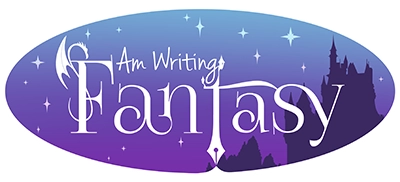Dialogue is so important to a story. It breaks up pages of prose. It reveals a character’s personality like no other method except for internal thoughts.
But so many authors get it wrong.
And that is understandable because there is a lot going on with dialogue. In some ways, dialogue takes more finesse and care than a paragraph of prose. But the good news is that there are some rules and tips to follow that will have the dialogue in your WIP sparkling with character insight and clues that pull readers deeper into your story.
First up is dialogue tags!
I like examples, so let’s start with this one:
“Where is it?”
“Across Coldbrook stream. There… is a place.”
“That could be anywhere for miles. We’ll never find it.”
“Tell me exactly where it was.”
“Up stream from the crossing at the Deep Water crossing.”
“She’s lying.”
“Nah, you wouldn’t do that. You know what will happen then, right?”
Or how about this one:
“They are coming.”
“How long do we have?”
“An hour, maybe two, but no more.”
“Get the livestock inside and close the gates in forty-five minutes. Anyone who doesn’t make it will have to find for themselves.”
“But your daughter—”
“I know where she is. I’m the one who sent her.”
“She might be safer where she is. The walls will never withstand the giants.”
Okay, what do you think of those two examples? Can you tell who is talking? What position might they have? How about how many people are in each scene?
There are things I could do to help differentiate speakers like add in an accent or some internal designations/titles to help a bit, like this:
“Th’y are comin”
“How long do we have?”
“Hour, mayhaps two. Not more.”
“Get the livestock inside and close the gates in forty-five minutes. Anyone who doesn’t make it will have to find for themselves.”
“But, sire, your daughter—”
“I know where she is. I’m the one who sent her.”
“She’n might be safer t’where she at. T’ese walls won’t never withstand the giants.”
Now can you tell three people are speaking and get a feel for roles? But does the dialogue hurt the tension the last line is supposed to convey?
Those are the sort of questions you need to worry about as you write, not only if who is speaking is clear to the reader, but if you are delivering the information in the best way, which is usually the most dramatic way, possible.
And that is where dialogue tags come in. There are two types of tags: dialogue and action tags. And it is a combination of both that highlight a scene and who is speaking.
Dialogue Tags
These are the most common tags with writing dialogue and often where novice writers stop. And there is a lot of advice out there on what you should use. Like should you use something other than said? Many say no, never!
But the truth is it depends on your genre. So check a book, and I mean a high ranking and popular, well – known author’s book. Do they only use said?
Skim through several instances of dialogue and take note to what is used to designate who is speaking, how often said is used over other words like “hissed” or “spat.” Once you have that, or better yet, a combined analysis across several well-known authors, try to follow suit.
In fantasy, from what I’ve seen, said is used about 60% of the time when a dialogue tag is utilized. After that, all those fun words like grumbled, sighed, whispered, shouted, snarled come out.
Why are those words so much fun?
Because they set the mood so much more than using ‘said!’ It is as close to writing a script for a movie as fiction gets and that leads to why it is considered a problem. These fun dialogue tags provide so much more information to the reader. In fact, they are telling and not showing the reader.
These dialogue tags shouldn’t be the only clue to a character’s emotions. Previous actions like slamming a cup on the table to demonstrate anger should come before the dialogue tag “shouting.” These fun tags can enhance the mood when used right but shouldn’t be used with every single designation.
Dialogue tags keep who is speaking clear.
And other dialogue tags like “spat” or “hissed” often are misaligned because can you really spit a word or do you spit after a word?
I lean toward the use being fine. I like the image and mental sound of an angry character hissing a warning to a companion (or underling). I’ve heard words hurled like clipped gunfire, so yes, spitting words sounds possible. Sometimes our language doesn’t fit the image we are trying to create, and we can only do the best we can to set the scene, which can mean using words in ways others do not like.
Other dialogue tags like “grumbled,” “whispered,” and “sang” are nuanced uses of description.
They say how the character spoke rather than pointing directly at the emotion. So it is possible to keep your dialogue tags “sophisticated” and show only a small piece of the character’s current emotions, allowing the reader to grasp the current mood with everything else going on in the scene. This is the perfect use of dialogue tags!
So where does adding a few dialogue tags get us with the examples?
“Where is it?” Cameron asked.
“Across Coldbrook stream. There… is a place,” Maryion said.
“That could be anywhere for miles. We’ll never find it,” Jyff swore.
“Tell me exactly where it was,” Cameron growled.
“Up stream from the crossing at the Deep Water crossing,” Maryion whispered.
“She’s lying,” Jyff hissed.
“Nah, you wouldn’t do that,” Cameron said. “You know what will happen then, right?”
And number two:
“They are comin,” Harry warned
“How long do we have?” Duke Emmerin asked.
“Hour, mayhaps two,” Harry said. “Not more.”
“Get the livestock inside and close the gates in forty-five minutes,” Duke Emmerin ordered. “Anyone who doesn’t make it will have to find for themselves.”
The Captain of the Guard said quickly, “But, sire, your daughter—”
“I know where she is,” Duke Emmerin said. “I’m the one who sent her.”
“She’n might be safer t’where she at,” Harry sighed. “T’ese walls won’t never withstand the giants.”
I was trying to keep out any adverbs, but “quickly” snuck in there. But that is not such a bad thing; we’ll delve into those in the next post!
For now, the dialogue tags definitely HELP say who is speaking and give a few more clues to emotions going on. But tension is still really lacking. We’ll see how the adverbs help and then look at something that is really going to bring everything together: action tags!









0 Comments